Hi There!
So you finally made it to the content that can ACTUALLY transform your life and your business!! You are probably here because of two reasons:
- You already know about headless eCommerce architecture, and you want to learn how you can use it for your eCommerce store.
- Or you want to learn about the headless commerce solution to decide if it can actually help you or not.
If you belong to the second category, then I will recommend you to read our first blog on the headless commerce series. To gain better clarity.
And if you already know what headless commerce is, then let’s dive into the holy river of sales and profits in omnichannel Commerce.
Did you know 74% of customers use multiple channels throughout their shopping journey to buy a product?
Excuse me! I am not exaggerating! This is proven in the study by Harvard Business Review that there are 73% omnichannel customers in the eCommerce world. Yeah, I know I added 1% extra..but 73% is a huge number to neglect!
And you are sitting here at your brick-and-mortar store wondering why your competitors are eating gelatos in France on vacations while you get to eat ice cream from the grocery store around the corner.
So what exactly is omnichannel Commerce?
How much time do you spend on the internet every day? Knock knock!! You don’t actually have to calculate it. We all are guilty of spending a massive amount of our time. Omnichannel marketing uses this information to get you more sales.
In other words, Omnichannel marketing is consumer-first marketing. It is based on tailored shopping experience and strategies on where the brand should have a presence.
Omnichannel Commerce makes sure the customer experiences a seamless and personalized journey as it moves down the funnel.
Oh! Did I make it too complex to understand? Let’s understand this with an example:

A quick example of Omnichannel Commerce:
Let’s say you want to buy a Gucci bag for your partner (trying to keep it neutral, yeah, I support everyone ❣️).
What will you do? If you are rich enough, then you can ask your secretary or assistant to buy it for you (no offense if you are dating your secretary or assistant, I also support you!).
But if you are not that rich and you have to hustle yourself just like me, then the first thing you will do is Google!
You will check the cost of a Gucci bag and decide the size suitable to burn your pockets. After that, you might use Pinterest to check the latest designs as per the size for inspiration. You will see advertisements for Gucci by popular celebrities and influencers. Then you might check the Instagram accounts of some popular Gucci stores around the world for new design ideas.
And finally, after weeks and months of research, you will finally place the order just when the birthday or anniversary is around the corner. Let’s not talk about the stress you will feel later to get the delivery on time.
But this entire presence of Gucci on different channels is what we call omnichannel Commerce. And not only Gucci but the omnichannel presence is essential for every service or product-based business.
It is a new flex in the retail industry that puts your offering into the sight of your ideal customers. Advertising, social media, email, mobile app, website, Progressive web app, and even brick-and-mortar stores are also considered a platform in the Omnichannel strategy.
Omnichannel is not new, nor is eCommerce, so why do I need headless commerce?
Yes, it is possible to go omnichannel with a traditional eCommerce application or website, but do you know how many functionalities you will have to add for each new channel? And how exactly are you planning to keep track of each one? What will you do about the server usage of so many functions and the speed of your application which will reduce this burden?
And how can we forget the most essential and rigid part of our eCommerce business? The product description page comes from a century-old template (Not exaggerating again!).
A single product page is dependent on multiple systems like content, media, specifications, price list, inventories, and many more. Now a single problem is any one of the systems can affect the entire product page.
Sounds scary? It is!!!

This is where headless commerce comes into the picture. With headless commerce, these data come from different microservices, which may or may not come from different vendors. Did I make it complex again?
Read also : Best eCommerce Business Startup Ideas for 2022
Wait, I will try to explain it easily. – How headless commerce works.
If you operate your business on a traditional eCommerce platform, your frontend and backend are highly interconnected. Did you know that? Anyways, now you do. So, whenever you try to change or update the frontend, you must modify the database and backend business logic by default. And you are sick of this, Right?
This is a monolithic system that not only restricts creative control but also keeps you from adapting technologies to extend customer touchpoints. That is why you could not adopt the omnichannel commerce entirely until now.
The Headless commerce architecture for retailers, on the other hand, has no head or string attached between the front and backend. It decouples your eCommerce application’s buyer and administrative site via an API.
It is a content-led, API-driven system that makes two applications communicate with each other, passing API requests from your presentation and application layers. I know you are now wondering how it can help you provide an omnichannel experience.
A headless eCommerce platform comes equipped with APIs and tools. These APIs and tools empower you to create a consistent brand experience across multiple channels based on a unified data view. Consequently, you can turn any platform your customers use into your digital storefront. The cherry on the top, you can handle everything with one backend, including platforms from mobile apps and web pages, to smart wearables, kiosk screens, etc.
Don’t try too hard to understand. If you cannot, I get you!
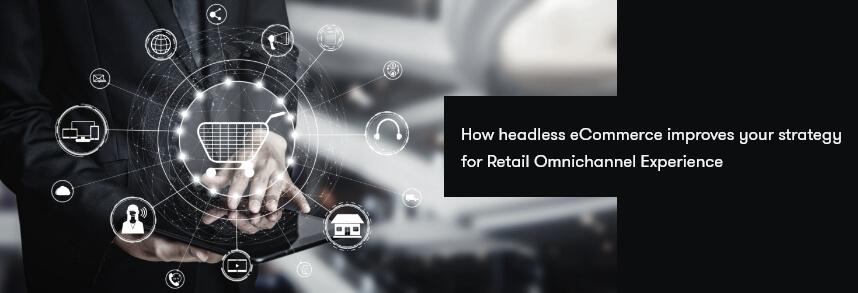
In What ways headless eCommerce improves your strategy for Retail Omnichannel Experience
Suppose you finally find an eCommerce app to purchase a Gucci bag for your partner. Remember that the brand has employed headless commerce. Now, when you place the order, the presentation layer (app interface) will send an API request to the app layer to process your order. Once the application layer completes its spellcraft (you register, order, payment, etc.), it communicates to the app interface. And now you can see the order status on your device’s display.
This is how the headless commerce platform’s backend interacts with anything able to send the API calls. In contrast, the frontend is now free from processing anything and gets what it is supposed to do, i.e., focus on displaying information to the customer.
The gist of headless eCommerce is that its frontend mechanism remains the same no matter what platform. Besides, the systems of old hard-coded templates will no longer be required.
As a result, you can make as many iterations as you need in your pages in a short period of time. Since APIs do all the interaction between frontend and backend, there will be nothing to stop you from tailoring a creative omnichannel experience for your beloved customers.
Read also : Start an eCommerce Business From Scratch In 2022
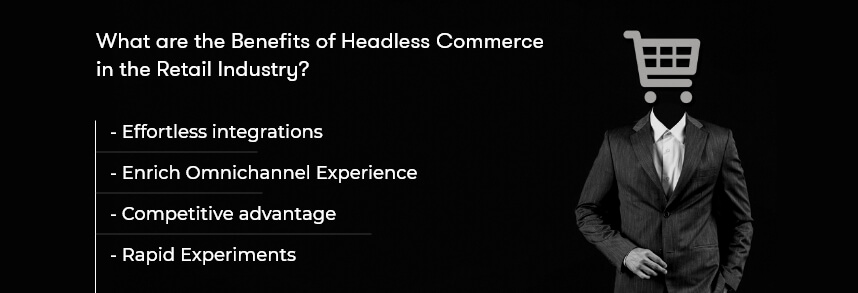
Benefits of Headless Commerce in the Retail Industry
Effortless integrations
CMS, online catalogs, shopping carts, payment gateways, FTP, personalization engines, and more are essential eCommerce functionalities. However, due to backend alterations, integrating and maintaining all these functionalities in a conventional eCommerce architecture is a headache. You may suffer from insomnia because of too much caffeine.
On the contrary, in the headless eCommerce architecture, you can integrate functionality as microservices in a snap. Thanks to its API layer that separates the front and backend, each functionality is independent. Having headless commerce is like a holy grail. Leveraging its seamless data connection and transfer capability, you can also clear constraints and use the data to its fullest.
Enrich Omnichannel Experience
eCommerce platforms with omnichannel earned a 494% higher order rate in 2021 than single-channel campaigns.
Every other retailer wants to adopt the omnichannel approach. But with traditional commerce, offering a streamlined shopping experience on multiple platforms is nothing but asking for more problems. Imagine integrating and managing numerous plugins and codes to facilitate the sell-everywhere strategy. Ugh!
In order to provide a second-to-none omnichannel experience, headless commerce is the best solution so far. The solution centralizes data and provides an API layer that enables brands to unify their customer experience across all touchpoints. Furthermore, it brings power to the frontend developer’s hand to easily integrate ecommerce into any customer experience.
Competitive advantage
A headless commerce platform gives you the flexibility to rapidly update your website’s frontend without affecting the backend system. This is in contrast to traditional eCommerce platforms, which can often experience workflow delays and outages when release updates are made.
Better customer service is one of the main benefits of using a headless platform. With a headless platform, you can easily add new features to your website without having to make any changes to your backend. For example, you can add a rewards program or a product rating feature without having to modify the backend.
Rapid Experiments
The headless commerce architecture is popular among brands that want to experiment faster with their online presence. I am not boasting, but… by separating the front and backend of your eCommerce site, you can easily experiment without disturbing the development team.
It gives you the flexibility to roll out new features, test promotion/discount offers, create an engaging experience, play with the layout, and more. The best part is you don’t have to worry about additional high costs associated with traditional eCommerce development.
Even though the headless commerce architecture is still in its early stages of development, it has already shown promise as a way for brands to experiment with their online presence.
I think without wasting time, you should also give it a chance. After all, there are ample opportunities to gain a competitive edge. All you need is to bring your creative head because it is headless. 😉
Read also : Cost to start an eCommerce Business in 2022
Brands that will make you embrace headless commerce instantly
Zenith Watch
A Swiss luxury watchmaker brand, Zenith had been operating with traditional selling channels. The luxurious accessories brand recently decided to embrace the latest omnichannel online shopping but also wanted to keep the customer experience impeccable. Of course, they would not jeopardize the high-end household name they have earned over the years.
They needed a future-proof platform, enabling the presentation of rich content, online images that must match the real-life watches, and connecting 3rd party services and further innovations.
TBH, Traditional commerce couldn’t meet their expectations effectively as the decoupled architecture did. It not only guaranteed quality but also high performance for data transmissions between their eCommerce backend and visitors while securing future development. As a result, the brand launched 7 new international online stores within 3 months with an increasing 23% estimated sales revenue.
Burrow
Burrow is a Furniture and Home Furnishings Manufacturing brand with the vision to eliminate the hassle of furniture shopping. When the brand grew from a single product, vendor, and channel to a multi-product, multi-vendor, and multi-channel enterprise, its traditional commerce approach started to backfire.
The phenomena raised the need for a template-free website to grow with unlimited creativity and offer customers customized experiences. Besides, they wanted to free their development team from making simple changes or unnecessary maintenance.
So, Burrow transcended from monolithic to headless commerce. Headless CMS helped the brand to modernize the platform, giving the flexibility to create a personalized shopping experience for its customers.
As a result, they noticed improved site performance by 50%, a 30% conversion rate hike in just 2 months, and a 4% increase in average order value.
What are you waiting for?
Wow! You made it till the end. But let’s not close the chapter. Instead of putting up with the traditional commerce that is controlling your business growth, you should go headless.
Once there would be no head, you will have all the freedom to customize your brand look, feel, and experience to its fullest. Besides that, you will no longer be tied to a single platform or template.
Above all, you get to experiment with:- different channels to find where your customers are, offer the experience they crave, and test ideas, new products, marketing campaigns, and everything without compromising or modifying anything at the backend of your app.
Got a unique question? Ask right away.



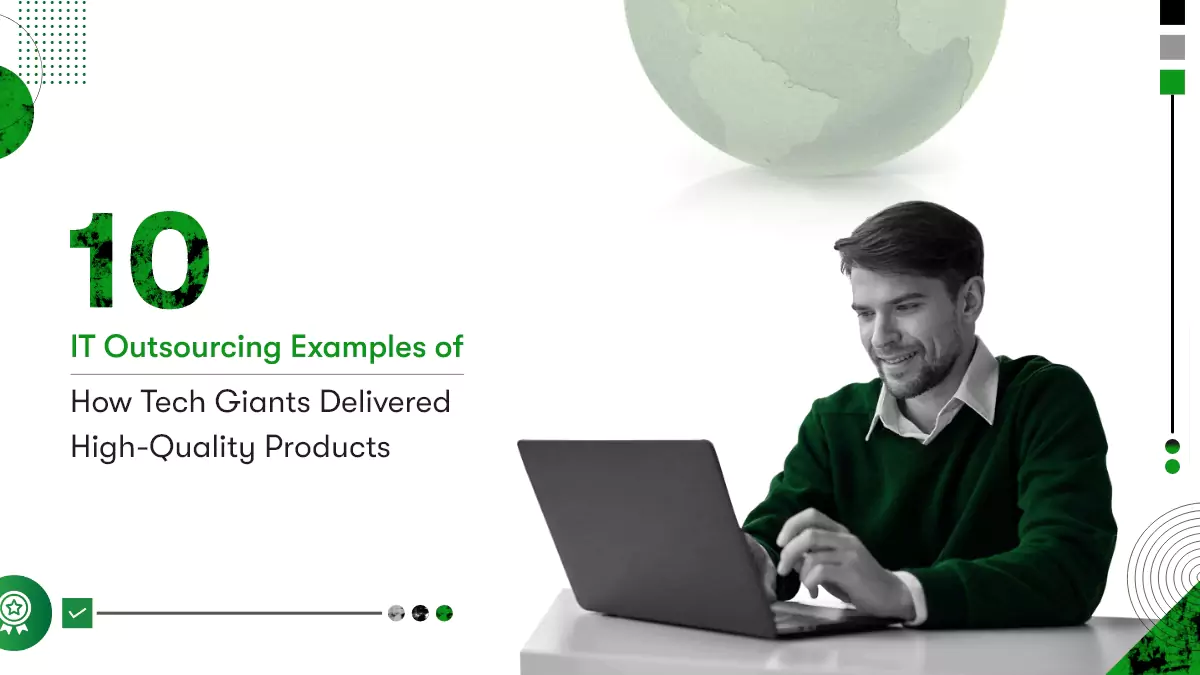
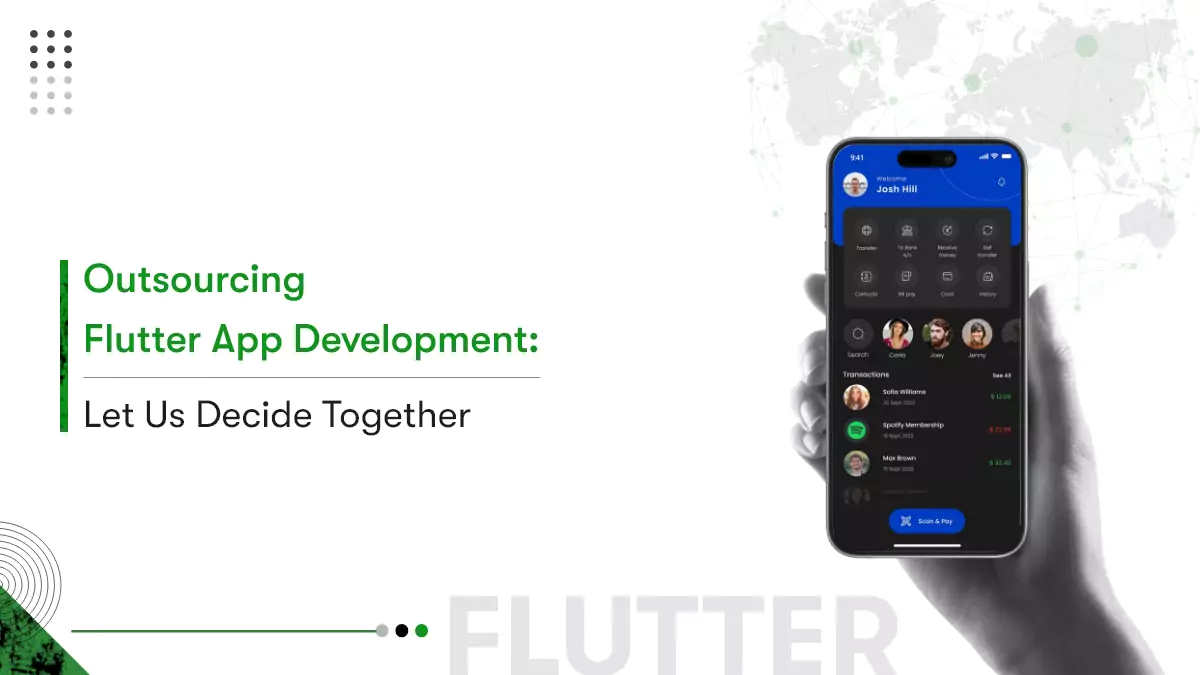
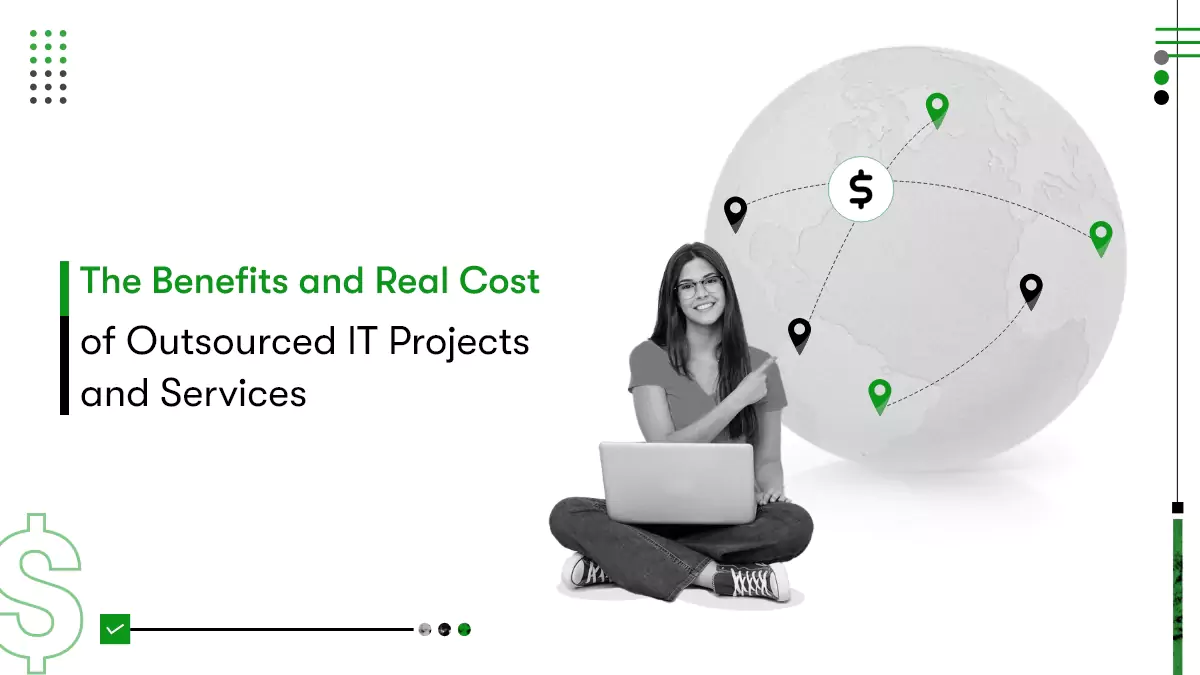





 Contact Information
Contact Information